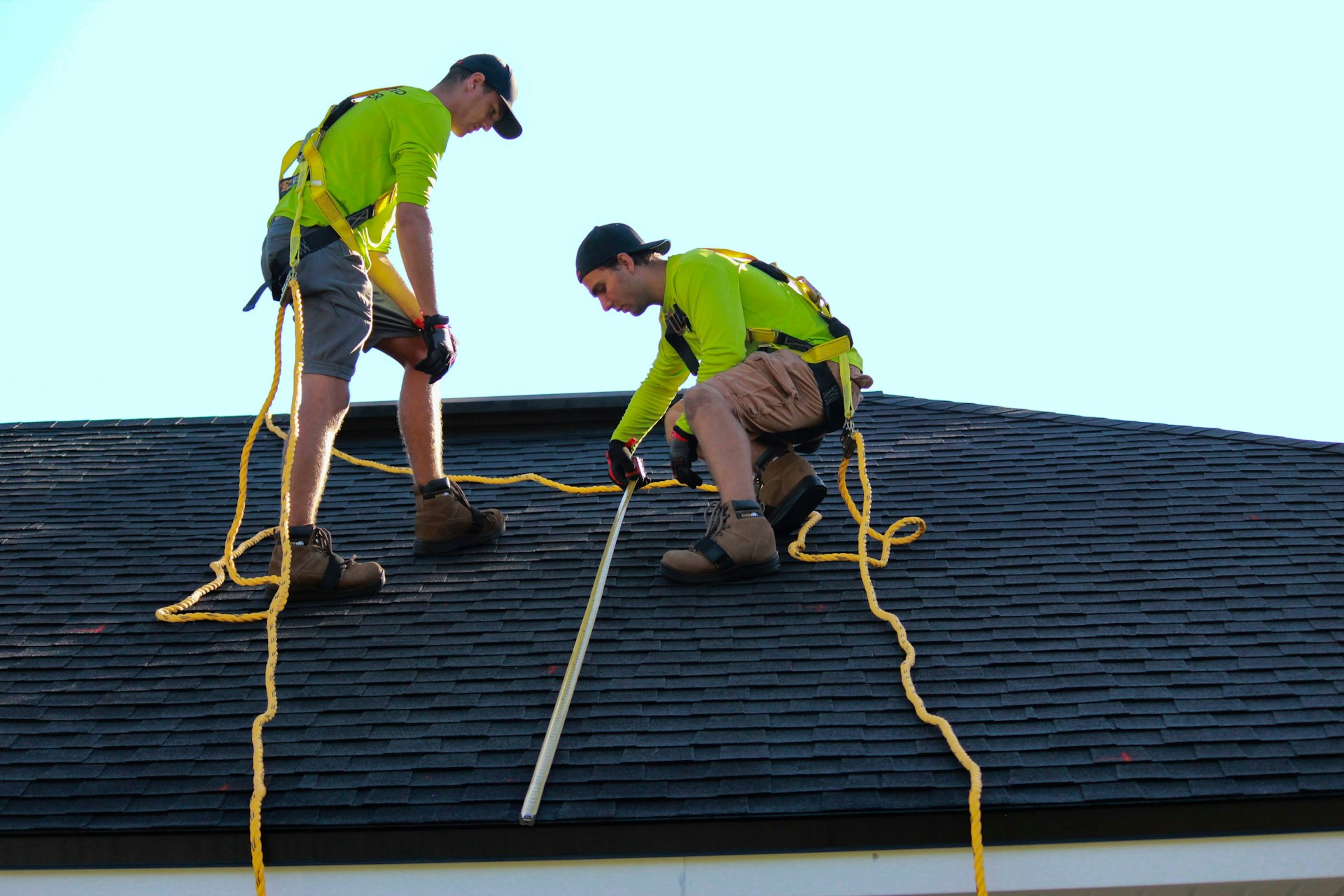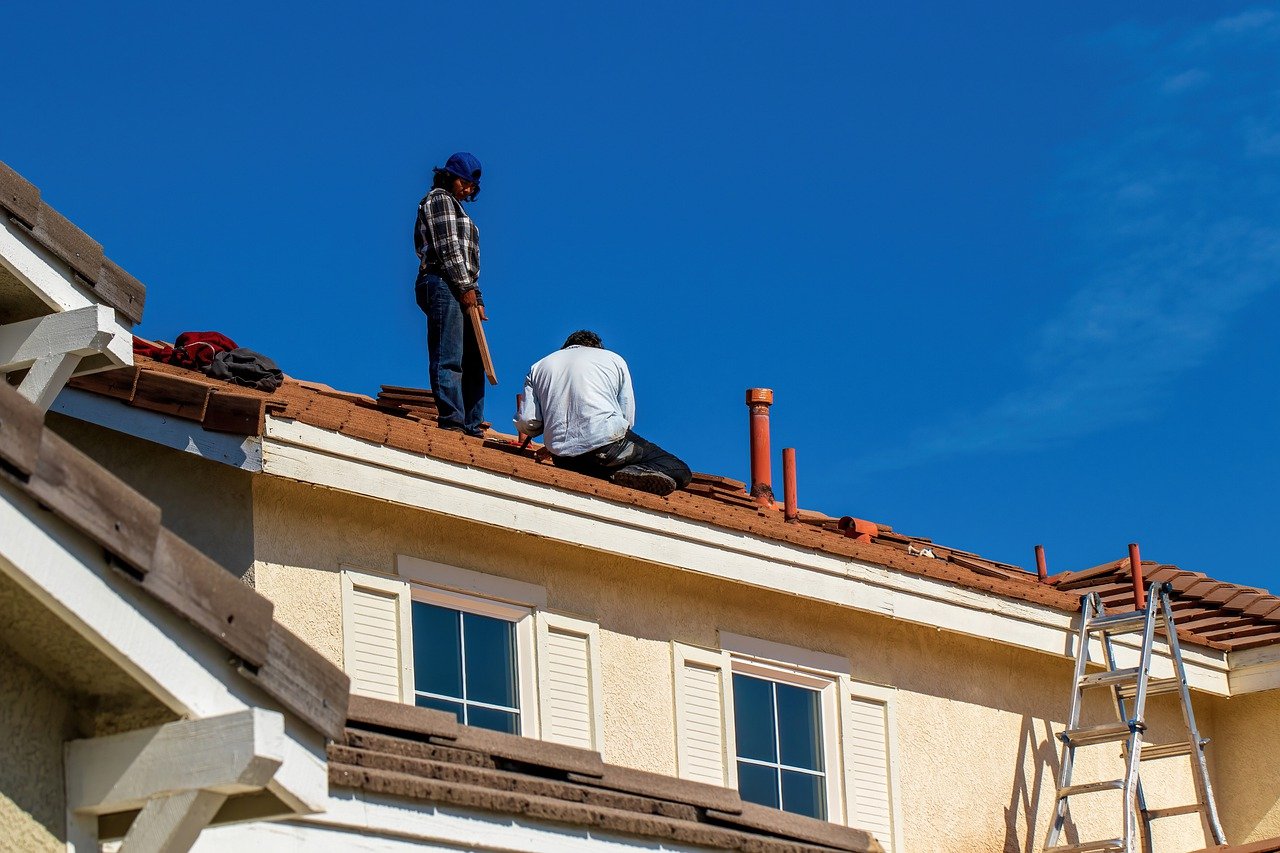The roof is a home’s primary protection against the elements. And, neglecting to maintain it can lead to structural issues, potential safety hazards, and costly damage.
Here, we’ll provide you with the ultimate guide to roof maintenance and repairs. From understanding different roof types to hiring professional roofing contractors, you can gather valuable insights and actionable tips to ensure the condition and longevity of your roof while maintaining a safe and secure home environment for your family. So, read on!
Understanding Roof Types
When it comes to roof care, it’s essential to understand the different types of roofs and their specific maintenance requirements.
Asphalt Shingle Roofs
Asphalt shingle roofs are a popular choice for many homeowners in the US due to their affordability and versatility in design options. They’re relatively easy to install, making them a convenient option for residential properties.
However, shingle roofs are more susceptible to damage from weather elements, such as wind, rain, and hail, and they have a shorter lifespan compared to other roofing materials. Common issues with these roofs include damaged shingles, such as cracks or curls, and missing shingles. It’s important to address these issues promptly to prevent water penetration.
Metal Roofs
These types of roofs are known for their exceptional durability and long lifespan. They offer excellent protection against fire, are energy-efficient, and require minimal maintenance. However, they have a higher upfront cost and can be noisy during heavy rain or hail.
Common issues with metal roofs include loose fasteners, which can lead to leaks if not addressed, as well as rust and corrosion. Seam and flashing leaks are also areas of concern that need to be identified and repaired to maintain their integrity.
Tile Roofs
Known for their aesthetic appeal and durability, tile roofs provide excellent protection against fire and can withstand harsh weather conditions. However, they’re heavier than other roofing materials, requiring additional structural support in some cases.
Problems to look out for when having tile roofs are broken or cracked tiles, which should be replaced immediately to prevent water damage.
Flat Roofs
Flat roofs are commonly found on commercial buildings but are also used in residential properties. They are cost-effective, are easier to maintain, and provide additional space utilization.
Pooling water is the most common issue with flat roofs. It needs to be addressed promptly to prevent structural issues that require major repairs from happening.
Conducting Regular Inspections for Roof Care
Regular inspections are crucial for roof maintenance to check the integrity of your roofing system and catch any issues early on. It’s recommended to do these at least twice a year, typically in the spring and fall. However, the frequency can be adjusted depending on factors, such as the age of your roof, the climate in your area, and any recent severe weather events.
DIY Inspections vs. Professional Inspections
While you can perform basic inspections yourself, it’s advisable to have them done by professional roof maintenance experts at least once every few years. DIY inspections can help you identify obvious signs of wear and tear, but the experts have the expertise to detect underlying problems that may not be readily apparent. They can also provide valuable insights and recommendations for maintenance and repairs.
What to Look for During Inspections
During roof inspections, it’s crucial to be thorough and methodical. Here’s a checklist of the tasks that you should carry out.
- Check for missing, cracked, or curled shingles.
- Look for signs of water damage, such as stains or discoloration on ceilings or walls.
- Inspect flashings (metal strips used to seal joints) for damage or deterioration.
- Look for signs of moss, algae, or mold growth, which can indicate moisture problems.
- Check for loose or damaged roof vents, chimney flashing, or other roof penetrations.
- Examine gutters and downspouts for debris accumulation or signs of clogging.
Regular roof inspections play a vital role in preventing extensive damage and expensive repairs. Remember to document any findings with photographs or notes for future reference or when seeking professional advice.
Roof Maintenance and Cleaning
Over time, roofs can accumulate debris, dirt, leaves, and other organic materials that can trap moisture. Proper residential roof maintenance helps prevent this issue, ensuring that your roof remains in good condition and lasts long.
Recommended Cleaning Techniques and Tools
When it comes to cleaning your roof, it’s important to use gentle techniques and suitable tools to avoid causing damage.
Soft Washing
This involves using a low-pressure water spray combined with a biodegradable cleaning solution to remove dirt, algae, and mildew. Avoid using high-pressure washers as they can dislodge shingles or tiles.
Brushing
For stubborn stains or growths, gently scrub the affected areas with a soft-bristle brush. Use caution to avoid damaging the roofing material.
Removing Debris and Preventing Clogs
Regularly removing debris from your roof is crucial to prevent clogs and water build-up. Here’s what you can do.
- Clearing Gutters – Remove leaves, twigs, and other debris from gutters and downspouts to maintain proper water flow and prevent water from backing up onto the roof.
- Trimming Overhanging Trees – Trim branches that hang over your roof to minimize the accumulation of leaves and other debris.
- Inspecting Downspouts – Make sure that downspouts are properly connected and that water is directed away from your home’s foundation.
Handling Moss, Algae, and Other Growths
Not only are these problems unsightly, but are also detrimental to your roof’s health. Here’s how to address them.
Moss Removal
Gently scrape off moss using a plastic scraper or brush. Avoid using pressure washers or harsh chemicals, as they can damage the roof.
Algae and Mold Treatment
Apply a specialized roof cleaning solution or a mixture of water and bleach to affected areas, following manufacturer instructions. Rinse thoroughly afterward.
Preventing Future Growth
Install zinc or copper strips near the roof ridge to help inhibit the growth of moss, algae, and mold over time.
If you’re unsure about any aspect of roof cleaning or encounter extensive growth or damage, it’s recommended to consult a professional roofing contractor for assistance.
Weatherproofing and Insulation
Proper insulation plays an essential role in maintaining a comfortable indoor environment and reducing energy consumption. It helps to regulate temperature, minimize heat loss in winter, and prevent heat gain during summer. Adequate insulation also contributes to the overall durability and longevity of your roof.
Sealing Gaps and Cracks
Gaps and cracks in your roof can lead to air leaks, water intrusion, and energy inefficiency. You should identify and seal these openings to maintain a weatherproof barrier. Inspect your roof for any gaps around vents, chimneys, skylights, or other roof penetrations. Use appropriate sealants or caulking to close these gaps and prevent moisture and air infiltration.
Emergency Roof Maintenance Tips
When faced with sudden roof damage or emergencies, it’s important to prioritize safety and take immediate action. Here are some roof maintenance tips to follow.
- Assess the Situation – Safely inspect your roof from the ground if possible, or use binoculars to get a closer look. Identify any visible signs of damage, such as missing shingles, leaks, or structural issues.
- Ensure Safety – If there’s severe damage or if you feel unsafe, evacuate the area and seek shelter. Avoid going onto the roof during hazardous conditions or if you’re unsure of your ability to assess and address the situation safely.
- Call for Professional Help – Contact a reputable roofing contractor as soon as possible to seek professional assistance. They can provide guidance and advice, and arrange for emergency repairs.
Temporary Fixes Until Professional Help Arrives
While awaiting professional help, you can take temporary measures to mitigate further damage. Keep in mind that these are short-term solutions and should not replace the need for professional repairs.
Tarping
If there’s a visible leak or opening, cover it with a waterproof tarp to prevent water from entering your home. Secure the tarp tightly using ropes or bungee cords to prevent it from being blown off by the wind.
Temporary Patching
For smaller holes or cracks, use roofing cement or a patching kit to seal the area temporarily. Apply the patching material according to the manufacturer’s instructions.
Clearing Debris
If there are branches, debris, or loose materials on your roof that may cause further damage, carefully remove them without putting yourself at risk.
Hiring Professional Roof Maintenance Services

While you have the ultimate guide to roof maintenance and repairs, hiring professional roofing contractors is essential for ensuring quality workmanship and avoiding potential serious issues. Here are some signs that indicate it may be time to hire them.
Extensive Age
If your roof is at least 20 years old, it’s advisable to have a professional roofing company inspect it. Aging roofs are more prone to wear and tear, and a professional can assess their condition accurately.
Missing or Broken Shingles
If you notice missing or broken shingles on your roof, it definitely needs immediate attention. Professional roof maintenance services can identify the underlying issues and provide the necessary repairs or replacements.
Damage from Inclement Weather
Storms, high winds, or heavy rainfall can cause significant damage to your roof. For leaks, water stains, or sagging areas, contact the professionals right away to assess and address them promptly.
How to Choose the Right Contractor
When hiring roofing contractors, it’s crucial to choose one that you can truly rely on. Here are some tips for making the right choice.
- Research and Reviews – Conduct thorough research online and read customer reviews to gauge the reputation and credibility of roofing contractors in your area.
- Licensing and Insurance – Ensure that the contractors you consider are properly licensed and adequately insured. This protects you from liabilities and ensures that the work is carried out by qualified professionals.
- Portfolio and Experience – Review the contractor’s portfolio and inquire about their experience in handling similar projects. An experienced one is more likely to deliver satisfactory results.
Evaluating Estimates and Contracts
Before signing an agreement with a contractor, you should obtain detailed estimates for the services offered. Here are things that you should look into.
- Scope of Work – Ensure that all necessary repairs or installations are included in the estimate or contract.
- Materials – Verify that the estimate specifies the type and quality of materials used.
- Timeline – Discuss the expected timeline for completing the project and any potential delays that may arise.
- Payment Terms – Understand the payment terms and schedule outlined in the contract.
By hiring the right professional roofing contractors, you can ensure that your roof receives the expertise and attention it needs. Remember to do your due diligence, ask the right questions, and carefully evaluate estimates and contracts before making a final decision.
Conclusion
With the ultimate guide to roof maintenance and repairs, you should now be well-informed and equipped to take care of your roof. Regular maintenance, prompt repairs, and professional assistance can help extend the lifespan of your roof and protect your home from weather elements. Stay safe, and don’t hesitate to seek expert help when needed!
Are you looking for more useful tips and information on home maintenance and improvement? Feel free to check out our other posts!
